By Gary Deters
Overseeding into an existing yard can be very difficult because there are many different scenarios, challenges, and questions that go into the decision. What to do? What kind of seed? Where to buy seed? How much seed do I use? Do I need to prep the area? How much water is required to get the seed to germinate? What do I do after the seeds germinate?
My neighbor had all of these questions when he attended a neighborhood meeting I hosted this summer about irrigation and lawn care. He had recently moved into the house and took over a yard that was neglected and had a lot of areas with dead turfgrass. Every landscape in the neighborhood was installed within the last five years by the developer and sodded with Kentucky bluegrass. Extended periods of drought without rain and little to no irrigation most likely led to the decline in the sod and allowed weeds to fill in the dead turfgrass areas. Sod desiccation can occur when sod has been exposed to prolonged drought periods and all that remains is a dead brown thatch mat where unwanted weeds are given an opportunity to grow.
Kentucky bluegrass is the typical lawn grass in Minnesota and is often the species of choice for homeowners and landscape companies because it is readily available and has a few advantages over seeding. Kentucky bluegrass sod is typically grown in peat soils, comes in uniform rolls, and is usually capable of rooting within a week or two of planting. Oftentimes it initially performs very well after installation because homeowners are attentive and provide adequate irrigation to help it root. One negative of using sod versus seed is the layering of soil types, and in our neighborhood the sod was laid directly on heavy clay soils. My neighbor’s sod eventually failed because there were consecutive years of drought conditions and the lawn was not irrigated enough to keep the sod from desiccating.
On August 8, we walked around his yard to see the extent of the damage and to get an idea of the best tactics to use going forward. It was clear to me that the best approach was to overseed into the existing lawn. Since there was a small percentage of original Kentucky bluegrass sod still in the yard, I recommended using turf-type tall fescue as the overseeding species so there could be a tall fescue/bluegrass mixture to take advantage of each of their strengths. Kentucky bluegrass struggles to stay green during drought periods, but greens up earlier in the spring than tall fescue and survives even the harshest of winters; tall fescue has deep roots that allow it to stay green during most drought periods, but it doesn’t green up very quickly in the spring and can suffer damage if it is under ice for extended periods during the winter.
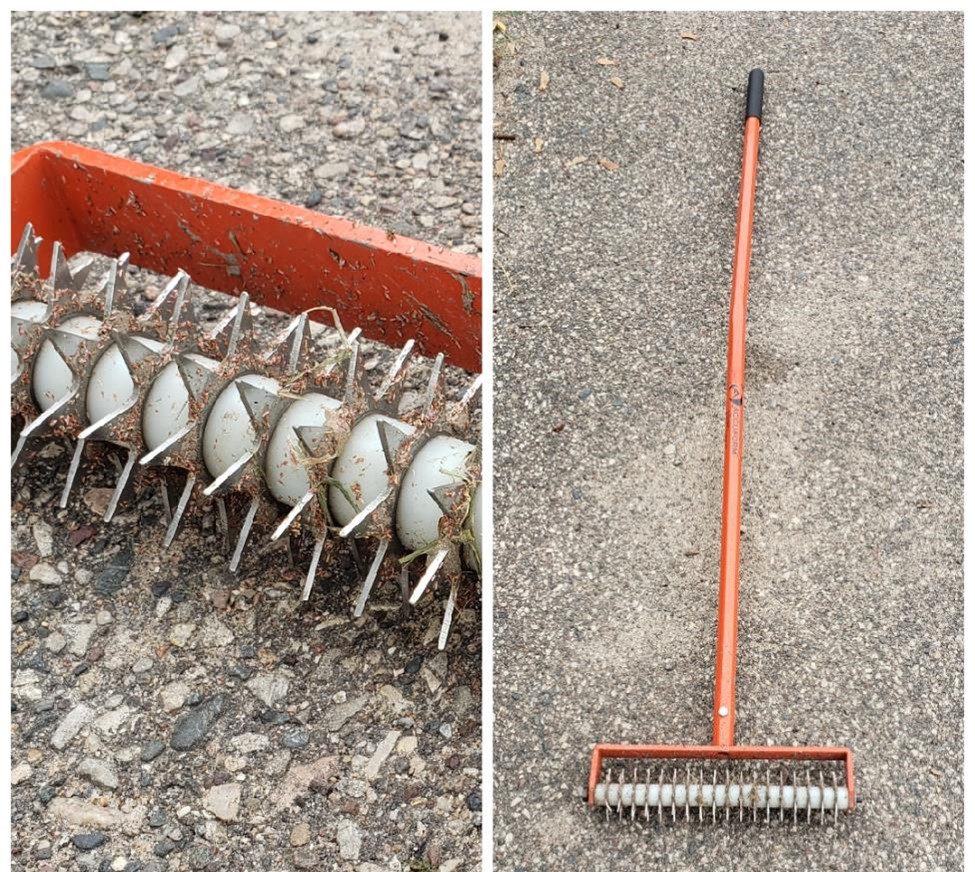
To prepare for overseeding, the lawn was de-thatched to remove as much excessive organic material from the dead sod as possible. On August 20, a blend of four different turf-type tall fescue varieties was seeded at a rate of 7 pounds per 1000 ft2. Following the seeding, we used a hand spiker (Figure 1) to help work the seed into the remaining thatch layer for better seed-to-soil contact (Figure 2). Oftentimes it is recommended to use a starter fertilizer to help the new seed with establishment, but I thought it would only help the remaining Kentucky bluegrass fill in the area. The plan was to allow the tall fescue to germinate and then fertilize. We set up the irrigation system to water the lawn 4 times a day, for 5 minutes each time until germination to a few days afterwards; our aim was to water as little as possible, but enough to keep the new seed and soil moist. The following week post-germination, it was twice a day for 10 minutes. We did have a few rain days in between, so some days did not require watering.
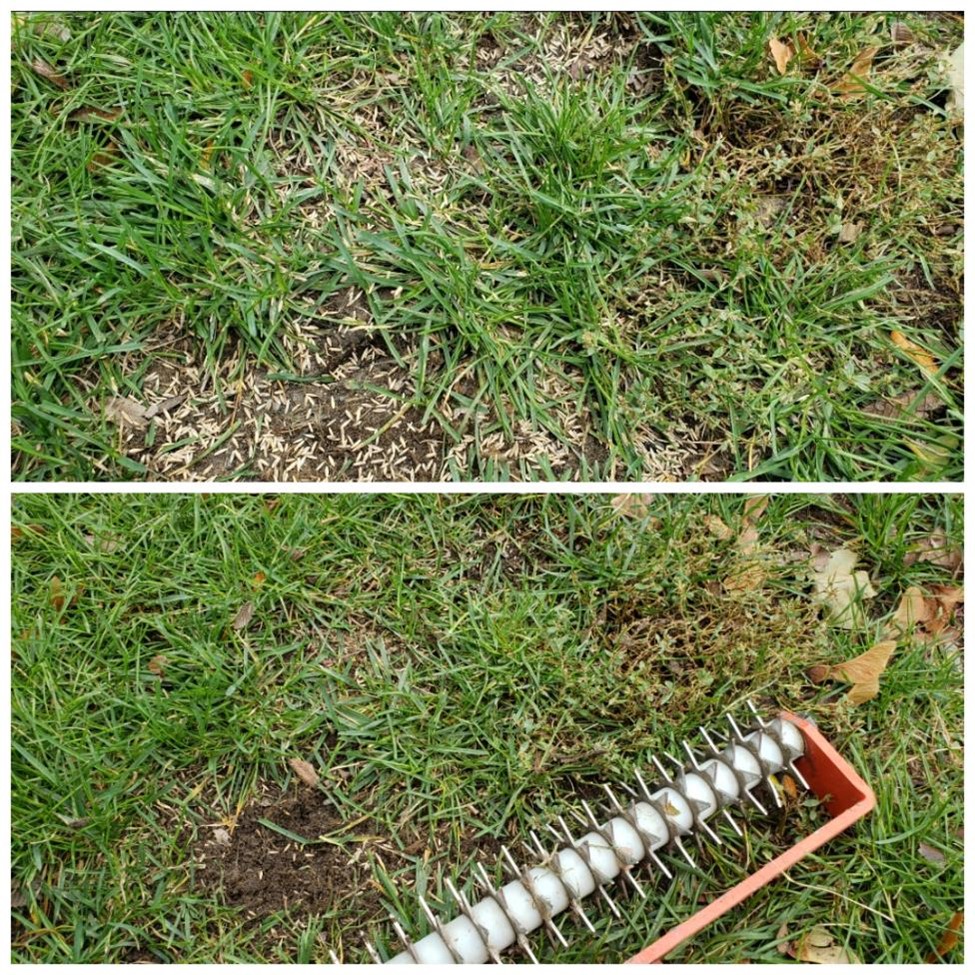
Seeding in the late summer takes advantage of cooler days/nights and warm soil temperatures, which is great for cool-season turfgrasses like tall fescue. Earlier this year I wrote about the difficulty of seeding in June and July and why late summer is a good time.
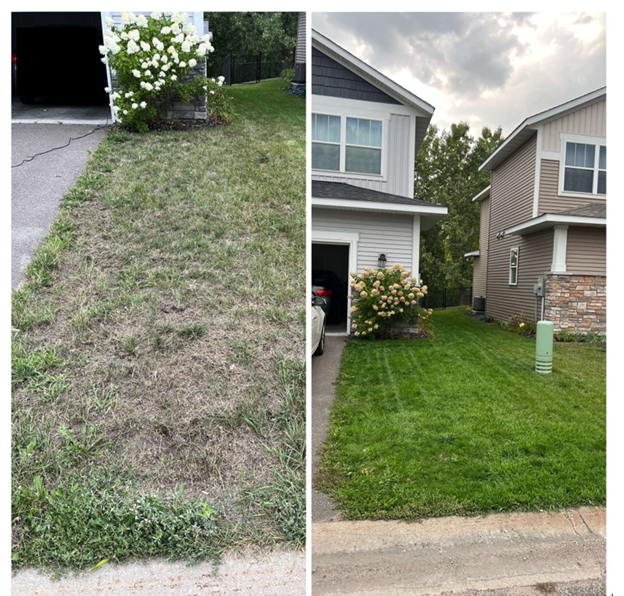
Within ten days there were newly germinated seedlings. We gave the new turfgrass a few weeks to grow and then applied a starter fertilizer at 0.75 lbs nitrogen per 1000 ft2. It has now been several weeks since the fertilizer application and with unseasonably warm weather and several rain showers the lawn has filled in well (Figures 3, 4 and 5).
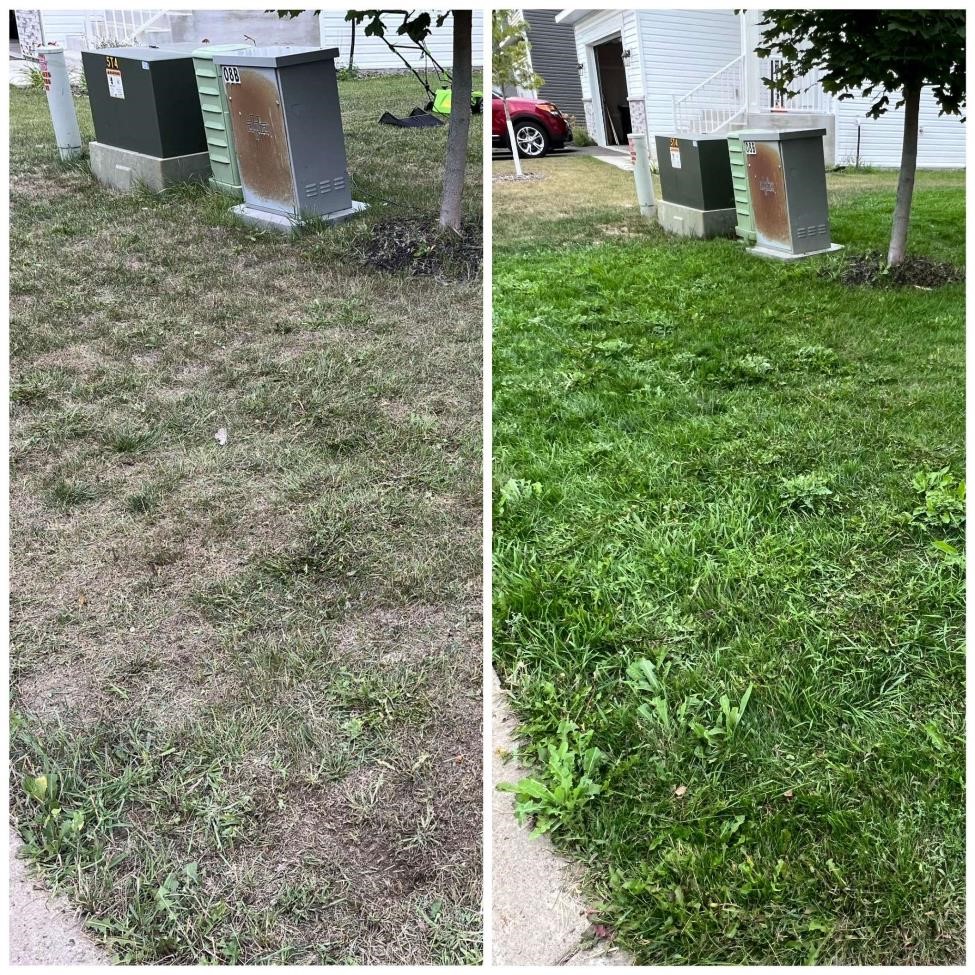
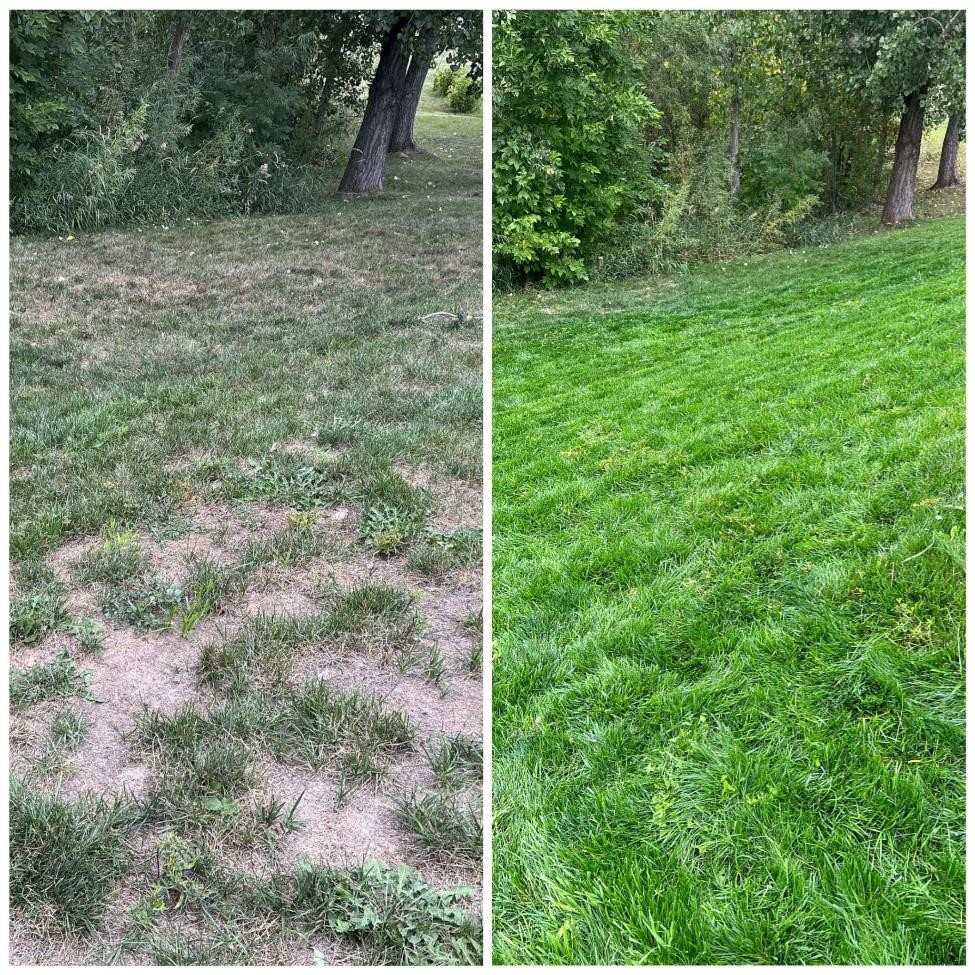
There are some broadleaf weeds currently present in the yard, but the main focus is to establish the new seed and existing bluegrass. A future application of herbicide might be applied this fall, but going forward I expect that a dense turf maintained at a higher height of cut will greatly reduce weed pressure. In November we are planning to dormant seed the tall fescue seed we had left over into those areas that didn’t fill in as well in order to continue introducing more tall fescue into the yard.
I wanted to share this story to show that with proper planning it is possible to successfully overseed while introducing a new grass species. Lawns are not always easy to maintain, especially with the lack of rain the last three summers, but with the addition of turf-type tall fescue my neighbor will have a much easier time managing his lawn during the summer months. If you want more information about purchasing seed, dormant seeding and/or renovating your lawn, check out these resources:
- Finding the right grass seed by Dr. Eric Watkins
- Purchasing turfgrass seed
- Dormant seeding your lawn from UMN Extension
- Investigating dormant seeding as an approach to establish lawns in Minnesota by Andrew Hollman
- Renovating a lawn for quality and sustainability from UMN Extension